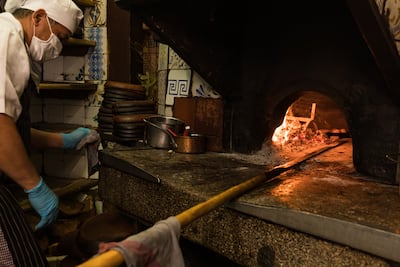The large cobblestoned expanse of Madrid’s Plaza Mayor – the centuries-old grand central square with its exquisite architecture – is described in guidebooks as the beating heart of the city.
On any given day, small clusters of walking tour groups typically mill around the Madrid plaza listening with varying degrees of concentration to the patter of well-rehearsed lines delivered by patient, thoughtful guides. They will tell you that Plaza Mayor has been the site of celebration, condemnation and bullfights through its long history. Street vendors ply their trade on its open spaces offering the near ubiquitous global commodity of replica football shirts for sale, while cafes provide shade and succour at the plaza’s perimeter in the form of coffee and churros, the highly calorific but delicious fried dough and dipping chocolate snack.
If you duck for shade at the Arco de Cuchilleros on one corner of the plaza, you’ll find a tumbledown, mildly treacherous stone staircase leading to street level and a few metres further on you’ll stumble upon Restaurante Botin, founded in 1725, 300 years ago.
The restaurant’s menu proudly proclaims in capital letters that it is “the earliest restaurant in the world” before adding in humble parentheses “according to the Guinness Book of Records” as a form of justification to laying claim to the title. The accolade is based on several criteria, including that the restaurant has been open continuously at the same location and trading under the same name – it was originally established by Jean Botin – for three centuries.
You may have seen some reporting elsewhere marking Botin’s birthday. The Times of London said it was the place to find Madrid’s soul. The Financial Times wondered whether the restaurant was not much more than a tourist trap. Others have said Botin dishes up centuries of culinary traditions to its patrons. Each one of those conclusions may well be correct.

It is true that tourists regularly mill around outside the building, watching groups of visitors sweep inside to fulfil reservations secured weeks before, but it is also a place to experience and to pay homage to tradition and perseverance. The caveat emptor is that the restaurant’s speciality is suckling pig, although it also offers a collection of meat, fish and vegetarian dishes on its menu as alternatives.
Part of the restaurant’s fame was cemented by Ernest Hemingway’s The Sun Also Rises, itself nearly a century old, and the fleeting reference to a hot and bright Madrid day and his protagonists lunching upstairs at Botin’s, which is described as “one of the best restaurants in the world”. The reference is typically perfunctory and unembellished but delivered with trademark certainty on Hemingway’s pages.
I was fortunate to dine at Botin’s last year more by happenstance than judgment. We hadn’t used the online booking system to secure a table in advance, instead we doorstepped the staff at lunchtime to secure a slot in the evening.
We were grateful for our seats, although we may have been stationed at the worst table in the house – next to a service area and a thoroughfare that led to a stairwell and the “upstairs” of Hemingway’s pages – and at a far earlier time than many would consider for evening dining. But ours may well have been the best table, too, as we watched the ebb and flow of expectant patrons and busy staff.


The dinner was lovely. The service was, by turns, attentive and charmingly unfocused, and the setting was memorable. The restaurant’s decor is a mix of mediums, colour and lived experience. The bill was also a pleasant surprise when it arrived.
Oddly, for an outlet that is now 300 years old, Botin may well have faced its most difficult challenge only five years ago. Southern Europe was hit particularly hard by the first phase of the Covid-19 pandemic in March 2020 when all “non-essential” economic activities were stopped. The restaurant’s wood-fired oven might have fallen into forced disuse.
The tradition of keeping the oven going, it had never once cooled down in its 295-year existence to that point in time, persisted even in these most challenging days. The symbolism of keeping the fire alive every day was rich, but there was a practical purpose, too. The era of the unknown was met head on by the certainty of maintaining routine, because no one knew what would happen to the oven and the building if the fires were allowed to cool. The so-called new normal was faced off by the normal routines of the pre-pandemic era. Even last month, when power cuts swept across Spain and Portugal, Botin’s fire kept on burning.
The message of preserving cultural assets and keeping them going in the face of adversity is a universal one, just as the idea that a restaurant can survive (let alone thrive) ever-shifting tastes for three centuries is a fanciful one. But Botin’s lesson to the world is also that it is possible to flourish over the long term, but only with the right mix of determination, heritage and conviction.


